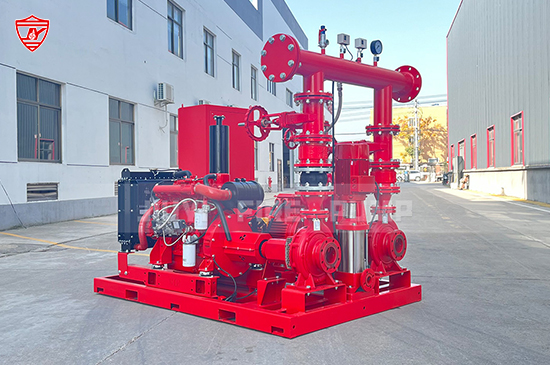A properly maintained fire pump ensures a reliable fire protection system when emergencies arise. Routine maintenance not only prevents unexpected failures but also keeps the pump compliant with NFPA 25 and extends its lifespan. Below are essential steps to keep your fire pump operating at peak efficiency.

1. Conduct Regular Inspections
Performing weekly and monthly visual inspections helps identify potential issues before they become critical. Key checkpoints include:
- Checking for leaks, corrosion, or visible damage
- Ensuring valves are in the correct position
- Verifying oil and coolant levels (for diesel fire pumps)
- Inspecting electrical connections and wiring
2. Perform Weekly and Monthly Testing
According to NFPA 25, fire pumps should undergo routine testing to confirm operational readiness:
- Weekly run tests (for diesel pumps) and monthly no-flow tests (for electric pumps)
- Ensure smooth startup and verify pressure readings
- Monitor for unusual vibrations or noises
- Check battery charge and fuel levels in diesel-driven pumps
3. Schedule Annual Performance Testing
Fire pumps must undergo a full-flow performance test annually to ensure they meet design specifications. This includes:
- Measuring flow rate (GPM) and pressure (PSI)
- Checking for any drop in pump performance
- Comparing results with previous test records to detect gradual deterioration
4. Maintain Lubrication and Cooling Systems
Proper lubrication reduces friction and wear on mechanical components. Maintenance should include:
- Checking oil levels in bearings and motors
- Flushing and refilling coolant systems for diesel fire pumps
- Ensuring proper operation of heat exchangers and cooling fans
5. Inspect Pump Alignment and Couplings
Misalignment between the motor and pump can cause excessive wear and inefficiency. Regularly check:
- Coupling alignment and tightness
- Shaft rotation for smooth operation
- Any signs of vibration that could indicate imbalance
6. Keep Suction and Discharge Lines Clear
Obstructions in the suction and discharge lines can reduce water flow, impacting fire pump efficiency. Ensure:
- Suction strainers are free from debris
- Valves are fully open and functional
- No air leaks or cavitation issues
7. Follow NFPA 25 Compliance Guidelines
Compliance with NFPA 25 ensures fire pumps are maintained in accordance with industry standards. This includes:
- Keeping detailed maintenance and testing records
- Replacing worn-out parts before failure occurs
- Ensuring emergency power systems are functional
Conclusion
A well-maintained fire pump is essential for fire protection system reliability. By following NFPA 25 guidelines, conducting routine inspections, and scheduling regular testing, you can ensure your fire pump operates efficiently when needed most.
